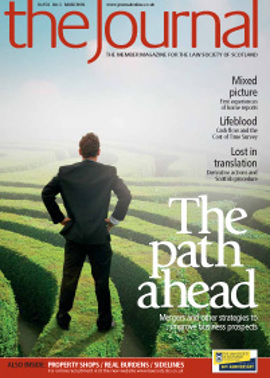Fruits of their labours

In the landmark ruling of Kelly and Chiu v GE Healthcare Ltd [2009] EWHC 181 (Pat), the High Court awarded two employee inventors a total of £1.5 million for their role in the development of patented medical technology.
Inventions in the course of employment are, with limited exceptions, owned by the employer. The Patents Act 1977, s 40 states that where an invention belonging to the employer has been of “outstanding benefit” to that employer, the inventor employee may be entitled to compensation for the benefit the employer has derived from the patent or, for patents applied for after 1 January 2005, the invention itself.
The claimants were research scientists formerly employed by Amersham International (“AI”) – who later became GE Healthcare – to research and develop a cardiac imaging agent. They co-invented “Myoview”. Patented in 1994, Myoview rapidly became AI’s principal source of profit, with sales exceeding £1.3 billion. Kelly and Chiu claimed that the patents had been of outstanding benefit to AI and they were entitled to compensation.
It was never disputed that the claimants, as per s 7(3) of the Act, were the “actual devisers” of the invention, or that the patents, as per s 39, vested in AI. The court had to decide whether the patents had been of outstanding benefit to AI and, if so, whether it was “just” to compensate the employees beyond the remuneration they had already received.
Causes of success
The sales figures clearly indicated the invention’s success, but the extent to which this could be attributed to the patents as opposed to other external factors was unclear. Floyd J decided that the patents had placed AI in a stronger, more lucrative market position, played an important part in corporate deals and had prevented generic competitors from entering the market, therefore securing AI’s market share and profits. The benefits were held to be far greater than anything an employer could normally expect to arise from this type of work, had helped transform AI and thus were “outstanding”.
Floyd J deemed the fact that Kelly had waited until two months before his retirement to raise the claim for compensation irrelevant, noting that the Act allows an employee to wait until the patent expires. Nor did he consider the employees’ salaries to be relevant in determining the justness of making an award: this was a factor to be considered in respect of the “share” of the benefit to which the employees were entitled only. An award was held to be just in respect of both employees.
In respect of contributions to the invention made by others within AI, Floyd J considered the nature of research projects, noting that colleagues would have been involved in the process to some extent and that Kelly and Chiu would no doubt have benefited from their input. The court was unable to single out any other individual whose contributions were sufficiently significant to warrant their input being factored into the calculation. The court also considered the value and significance of AI’s contribution, noting that medical research involved a “wide-ranging scattergun approach to discovering useful new agents” and at both the research and the development phases this had been facilitated by AI.
Sharing the benefit
To determine the employees’ share, the overall benefit to AI had to be quantified. Taking the total Myoview sales over the period of time the patents would have been in effect and applying an estimated drop in revenue of 10% caused by generic competition, a minimum benefit to AI of £50 million was established. Applying the factors set out in s 41(4) of the Act, Kelly and Chiu’s shares were then calculated.
Floyd J determined that the employee’s share of the value of the patents might range from nil to 33% or indeed beyond. In respect of Kelly and Chiu’s claim he deemed the share to lie at the bottom end of the scale, and awarded Kelly 2% (£1 million) and Chiu 1% (£500,000) for their efforts.
This is the first public example of employees successfully exercising their right to compensation under s 40. The pre-2005 version of the Act meant that the claimants had to satisfy the harder test of the outstanding benefit deriving from the patent and not the invention itself. The fact that the invention was in the medical field, where the market impact of generic competition is well known and monitored, may mean that the hurdle of demonstrating the outstanding benefit was slightly easier, but generally leading evidence to this effect in this and other fields may still prove very difficult. One concern voiced by R&D companies is that the decision may result in research being moved abroad to “employer friendly” countries. It is unlikely that the decision will lead to an immediate floodgate of other successful claims, but it is likely to encourage employers to review their existing employee incentivisation/ compensation schemes.
In this issue
- Corporate governance in family businesses
- Que será, será….
- A matter of form in administrations
- You may have to be mad to work here
- No standing still
- A new regime for financial advice
- United we stand?
- Watch your local trend
- Cash flow: the five essentials
- Secure our future
- Opportunity lost?
- The kilt doesn't quite fit
- We can work it out
- Asset in recovery
- Law reform update
- Be your own money saving expert
- Skeleton crew
- Ask Ash
- Only half a step
- Learning experience
- Too late, too late?
- Variations and the three year rule
- Fruits of their labours
- Death of a claim
- All part of the game
- Scottish Solicitors' Discipline Tribunal
- Website review
- Book reviews
- Just whistle while you work
- Performance review






